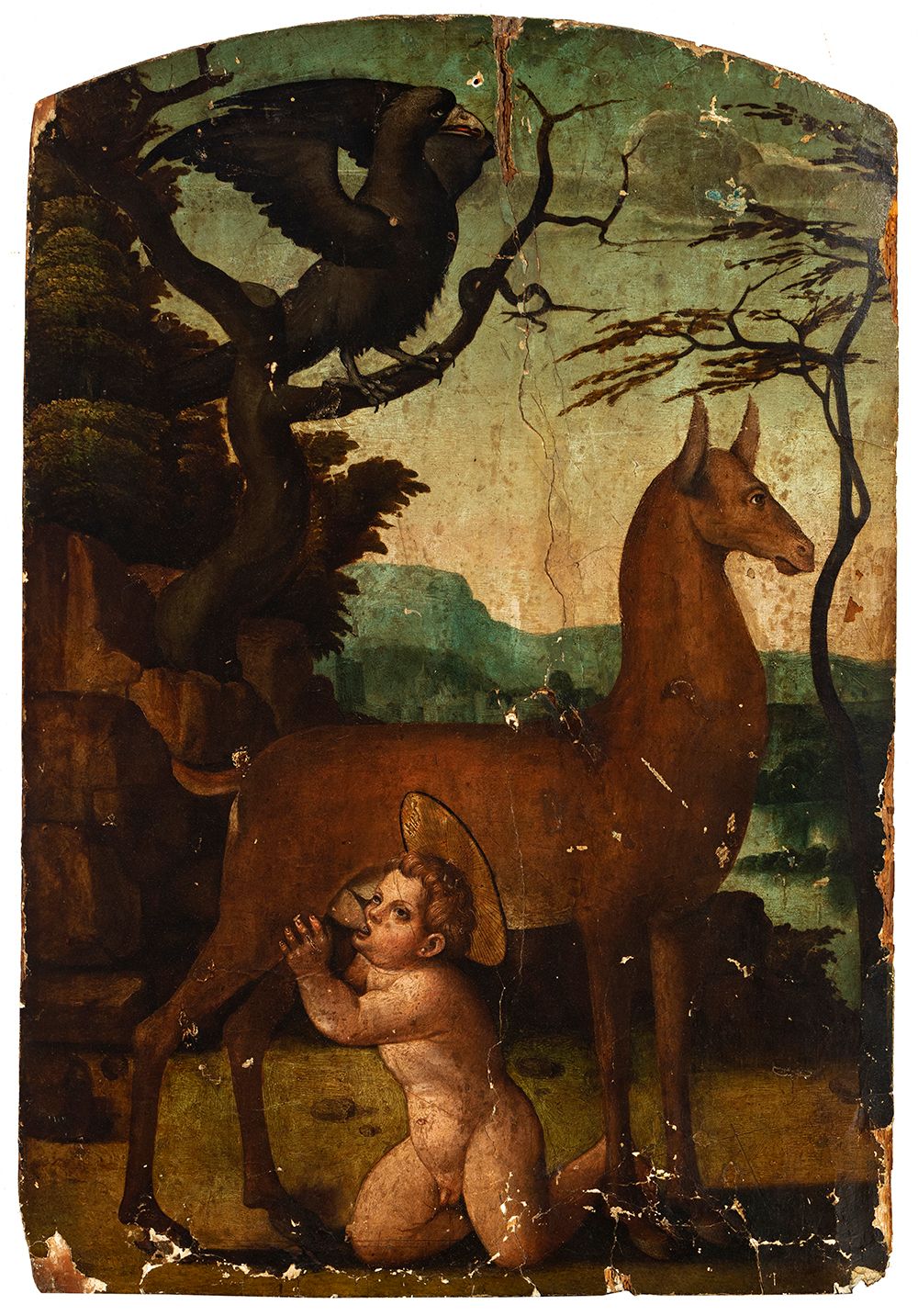Description
Valencian school of the 16th century. "San Bartolomé suckled by a doe". Oil or tempera on panel. The Arias Jauregui collection, to which this work belongs, had an important number of works from this period and school, as can be seen in an important altarpiece that he donated to the Bilbao Museum in 1934. Size: 60 x 41.5 cm. This is a Valencian panel depicting Saint Bartholomew as a child being suckled by a doe. Iconographically, the scene has its roots in written tradition, with Flemish manuscripts such as the one in the collection of the Royal Library in Brussels, in which Saint Bartholomew is described as a Syrian prince. His parents, unable to conceive a son, implore divine intercession, promising to offer their future child to the service of God. When the mother becomes pregnant, she has a premonition of how powerful her son will become, which is why the devil, jealous, kidnaps the newborn as soon as he is born. She then abandons him on top of a snow-covered mountain, where a doe feeds him with her own milk, miraculously saving his life. This theme had great repercussions in Catalonia, as can be seen in the altarpiece of Saint Bartholomew now in the National Art Museum of Catalonia, the upper panel of which is dedicated to the theme of Saint Bartholomew and the Hind.
1
Valencian school of the 16th century. "San Bartolomé suckled by a doe". Oil or tempera on panel. The Arias Jauregui collection, to which this work belongs, had an important number of works from this period and school, as can be seen in an important altarpiece that he donated to the Bilbao Museum in 1934. Size: 60 x 41.5 cm. This is a Valencian panel depicting Saint Bartholomew as a child being suckled by a doe. Iconographically, the scene has its roots in written tradition, with Flemish manuscripts such as the one in the collection of the Royal Library in Brussels, in which Saint Bartholomew is described as a Syrian prince. His parents, unable to conceive a son, implore divine intercession, promising to offer their future child to the service of God. When the mother becomes pregnant, she has a premonition of how powerful her son will become, which is why the devil, jealous, kidnaps the newborn as soon as he is born. She then abandons him on top of a snow-covered mountain, where a doe feeds him with her own milk, miraculously saving his life. This theme had great repercussions in Catalonia, as can be seen in the altarpiece of Saint Bartholomew now in the National Art Museum of Catalonia, the upper panel of which is dedicated to the theme of Saint Bartholomew and the Hind.
You may also like
